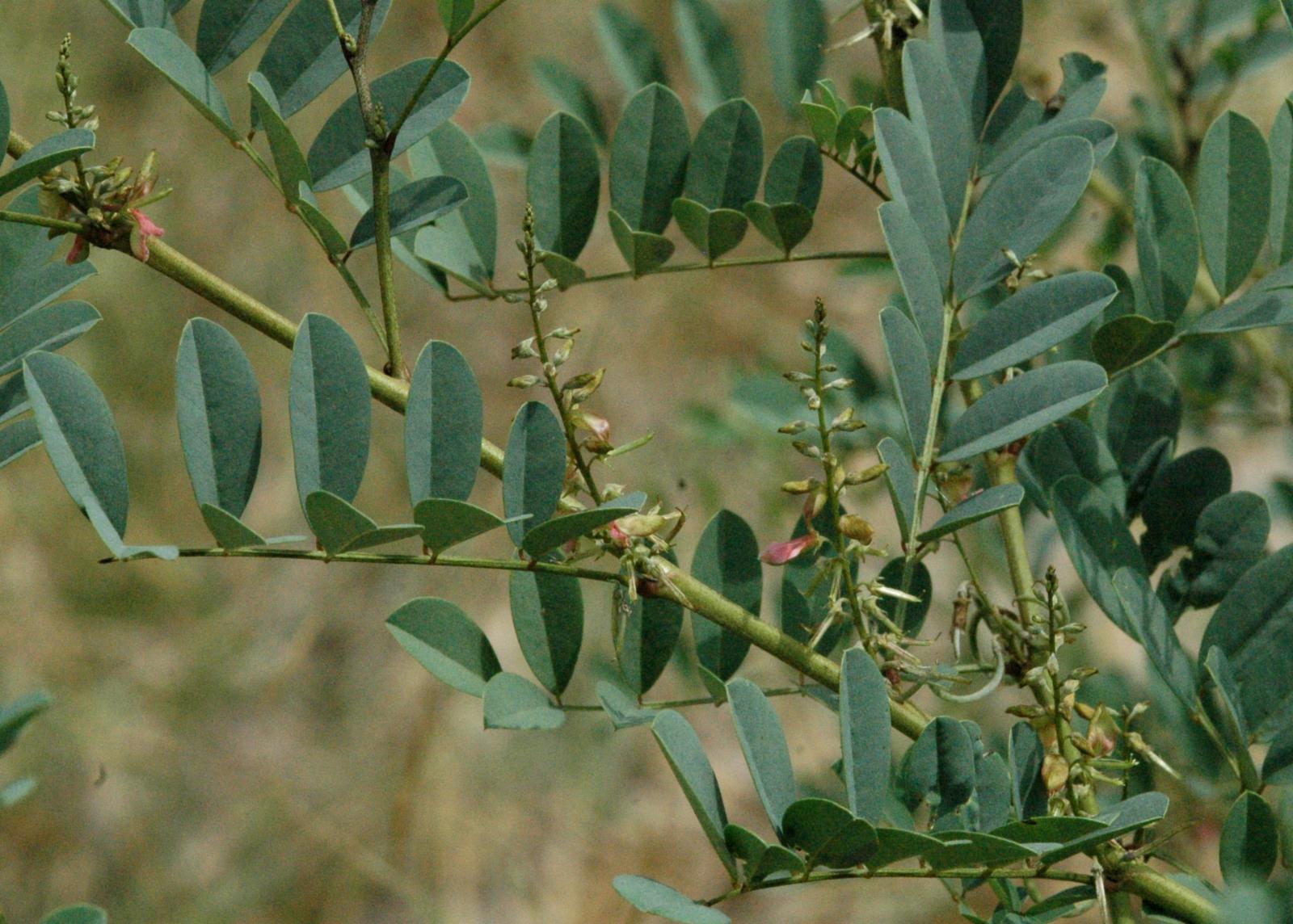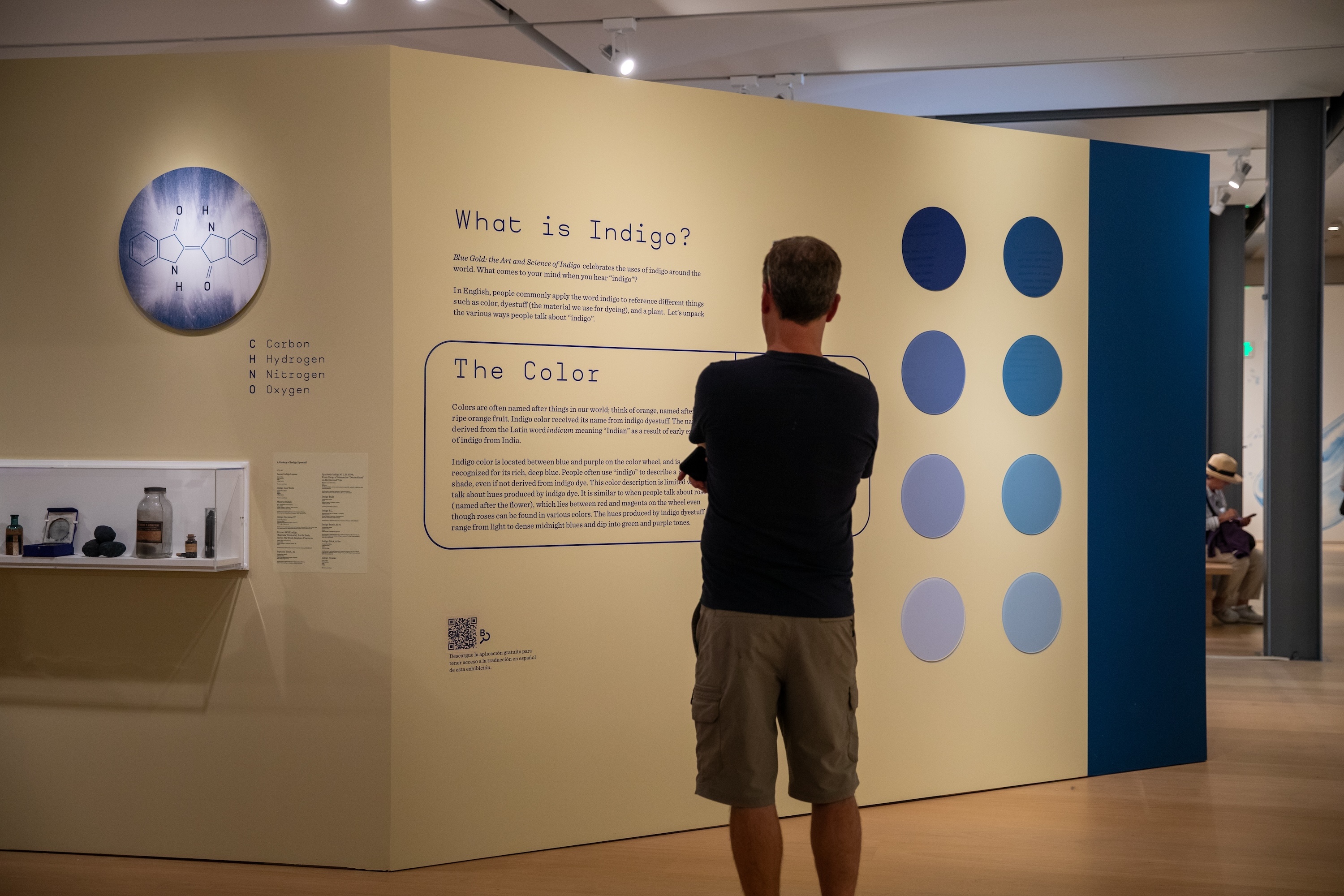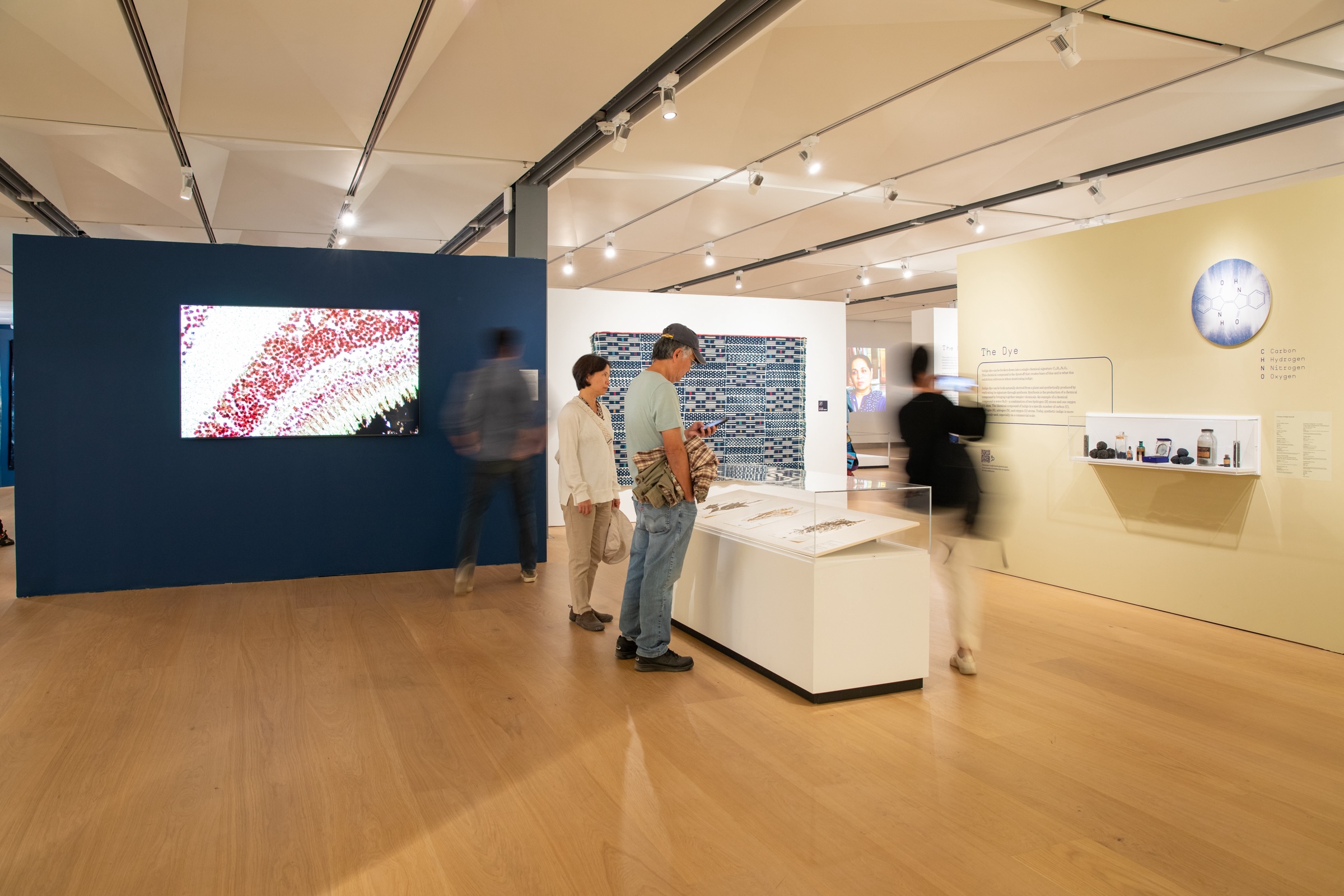Blue Gold: the Art and Science of Indigo celebrates the uses of indigo around the world. What comes to your mind when you hear “indigo”?
In English, people commonly apply the word indigo to reference different things such as color, dyestuff (the material we use for dyeing), and a plant. Let’s unpack the various ways people talk about “indigo”.
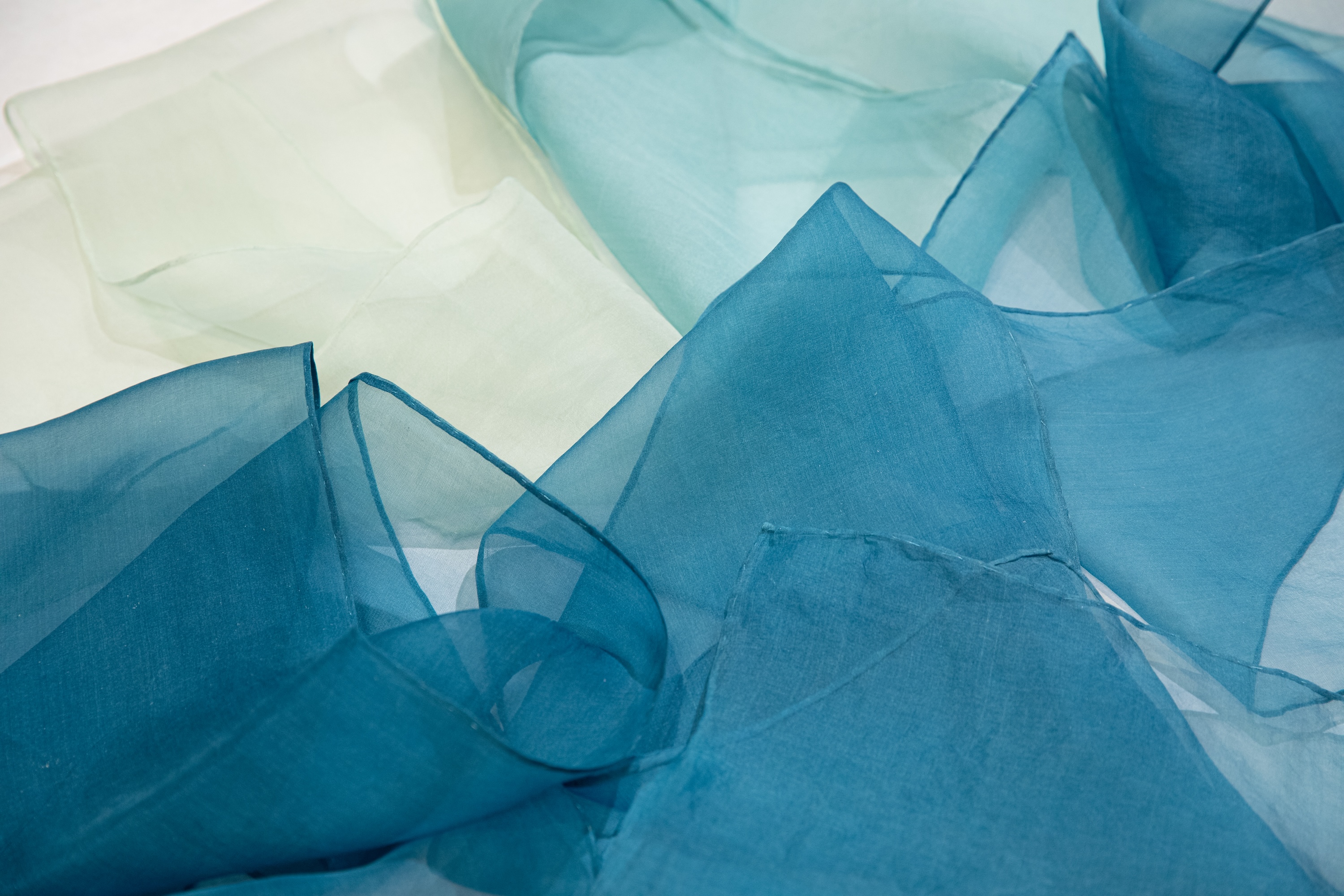
The Color
Colors are often named after things in our world; think of orange, named after the ripe orange fruit. Indigo color received its name from indigo dyestuff. The name is derived from the Latin word indicum meaning “Indian” as a result of early exports of indigo from India.
Indigo color is located between blue and purple on the color wheel, and is recognized for its rich, deep blue. People often use “indigo” to describe a specific shade, even if not derived from indigo dye. This color description is limited when we talk about hues produced by indigo dye. It is similar to when people talk about rose (named after the flower), which lies between red and magenta on the wheel even though roses can be found in various colors. The hues produced by indigo dyestuff range from light to dense midnight blues and dip into green and purple tones.
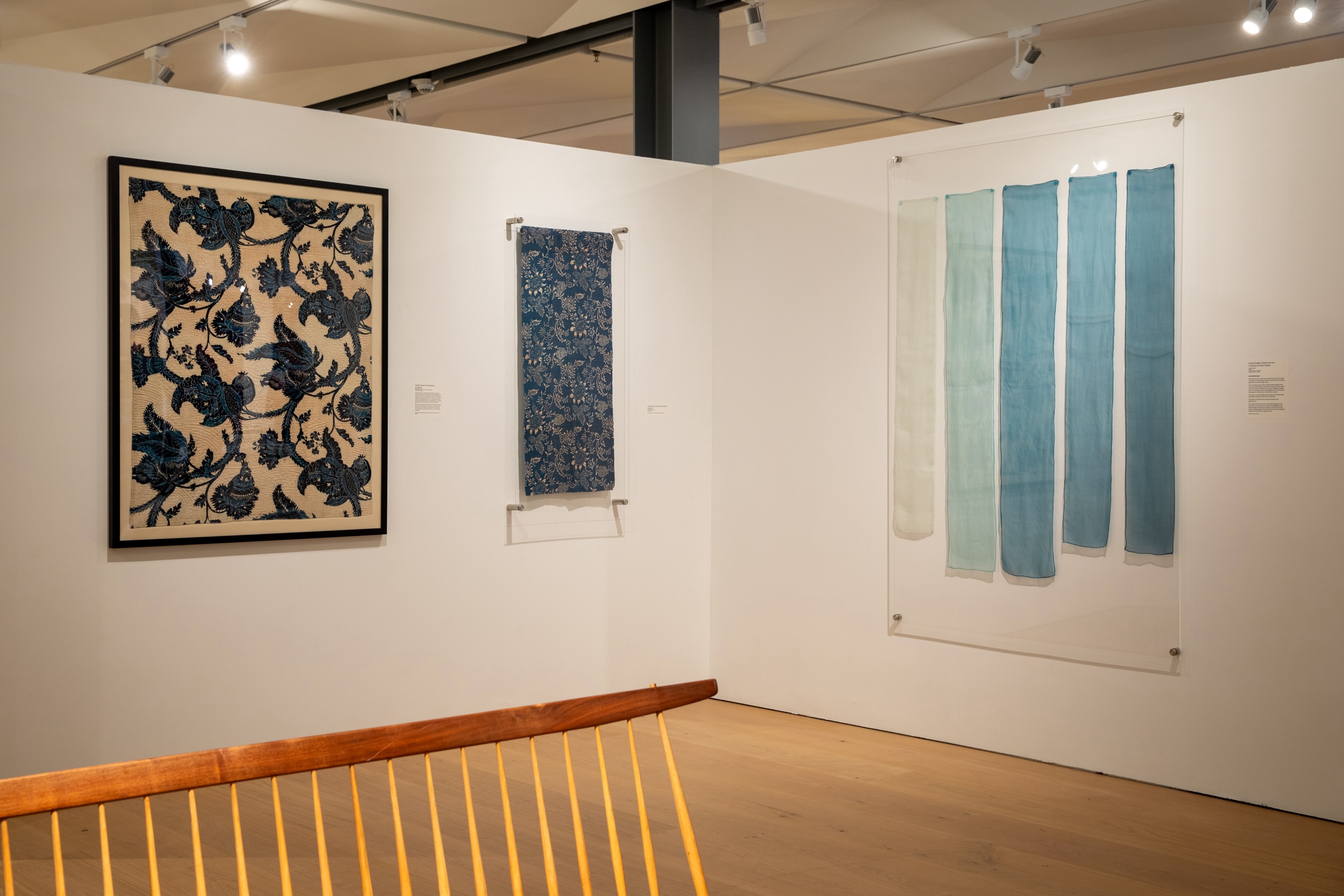
The Dye
Indigo dye can be broken down into a single chemical signature: C~16~H~10~N~2~O~2~. This chemical compound is the dyestuff that creates hues of blue and is what this exhibition references when mentioning indigo.
Indigo
dye can be both naturally derived from a plant and
synthetically produced by replicating its signature through
synthesis. Synthesis is the production of a chemical compound
by bringing together simpler chemicals. An example of a
chemical compound is water H~2~O – a combination of two
hydrogen (H) atoms and one oxygen (O) atom. The chemical
compound of indigo is a specific number of
carbon (C ), hydrogen (H), nitrogen (N), and oxygen (O) atoms.
Today, synthetic indigo is more commonly used, especially on a
commercial scale.
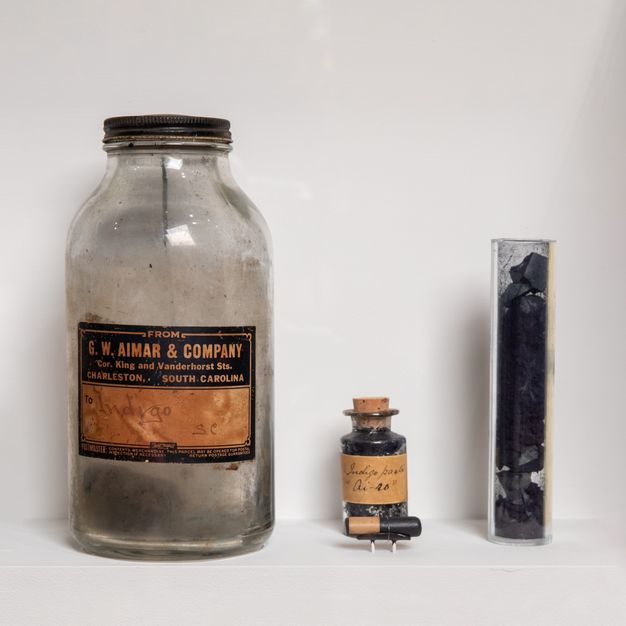

The Plants
It is misleading to talk about one indigo plant when there are, in fact, several genera (the category between species and family) of plants from which one can extract different concentrations of indigo dyestuff. These plants grow all over the world, leading cultures to independently discover indigo and its uses. Although the plants look different from one another, the end product has the exact same chemical signature, therefore we are unable to identify which specific plant was used to create the dye. Often the exact genera are deduced based on the period and region in which the object was created.
